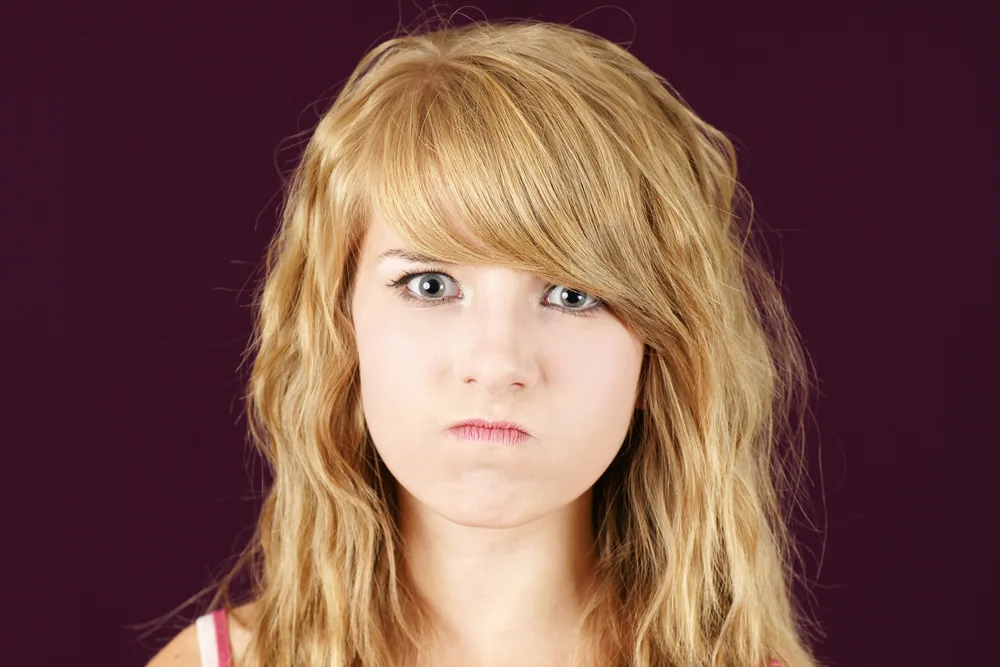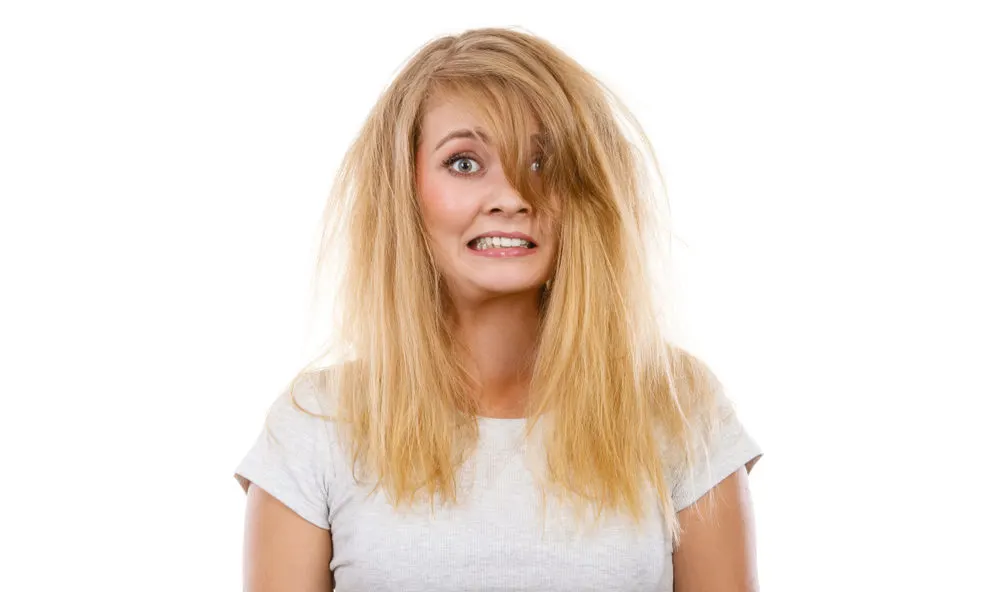Jump to:
With the current trends in hair care and treatment, it’s possible to overlook some critical factors and effects like brassy hair. So, what does brass hair look like? Read on to understand the causes, characteristics, and prevention of brassy hair.
What Is Brassy Hair?
Brassiness in hair is the warmer tones and colors, orange or copper, that appear after bleaching your hair. These undertones appear when the bleach in your lightening mixture doesn’t remove all the melanin from hair follicles or when your hair dye fades.
If you are fond of coloring your hair, brassy hair can kill your hype and excitement for your new hair color and appearance. These are some key points you should question when dealing with brassy hair:
- What are the primary causes of brassy hair?
- How can you tell it’s brassy hair?
- How can you fix brassy hair?
- Steps to take to prevent brassy hair?
This article answers most of these questions about proper colored-hair care and procedures.
Characteristics of Brassy Hair

Sylvia Bouchard/Shutterstock
Hair professionals can easily pick up brassy hair when they see it, while you might struggle. People tend to fear brassy hair because it doesn’t give accurate results when coloring.
The disappointment of different shades of color on your hair after coloring frustrates most people. The orange and yellowish color in brassy hair affects its texture and color. Also, it tends to be tougher to comb and has dry ends, which affects your hair’s health and appearance.
Turning darker hair to lighter poses more risks of brassy hair than that of blonde hair going light because the melanin in darker hair pigments are more challenging to lift.
You Might Also Like:
- How to Get Rid of Brassy Hair at Home
- How to Fix Orange Hair With Boxed Hair Dye
- How Long to Leave Toner on Brassy Hair
Causes of Brassy Hair
Brassiness occurs when the blue pigment color in hair dyes fades away, leaving the yellow and red colors. Check out these common causes of brassy hair.
Change in Activities or Sports
Increased outdoor activities like swimming expose chlorine in the pool’s water. Running also exposes your hair to oxidation. This exposure to different chemicals weakens the hair’s strength and changes its color.
In addition, outdoor activities prompt you to wash your hair more, which lessens your hair oils, making it lose its color and shine.
Too Much Heat
Using blow dryers or flat iron frequently after color-treating your hair risks further oxidation, causing it to have warmer tones on parts of your hair.
Bleaching/Coloring
Color treatment fades over time, making some hair sections have a warmer tone. With more washes into your treatment, consider your hair routine and products plan to maintain your intended color over time. Notably, colored hair oxidizes more than usual hair colors in the same situations.
Thus, be keen on how you handle your color-treated hair. You can counter your brassy hair by applying darker or lighter hues to your hair. It eliminates the brassiness for a better appearance.
Changes in Your Hair Routine and Products
Some hair products, like sulfate shampoos, reduce the moisture and color of your treated hair. Use cool water with appropriate shampoos for your colored hair to avoid getting these lighter notes on your hair.
Dealing With Brassy Hair
How can you fix or prevent having brassy hair? There’s no need to worry about brassy hair. It only affects the texture and color, but you can restore your hair color with proper hair treatment methods and products.
Understand the Coloring Process
Consult hair professionals to cater to your hair color and intentions before color-treating your hair. For example, the process differs if you have blonde or darker hair. Get a colorist who can thoroughly lift the melanin pigments from the hair to avoid brassy hair.
Choose the Right Color
Consider your hair color for color treatment. Going for cooler-toned options helps you counteract any brassiness incident that may occur during the coloring process.
Avoid Direct Sunlight
If you are looking to prevent brassy hair, avoid UV exposure. If you have to go out for activities during warmer months, use hair products with SPFs.
Also, look out for exposure to chemicals and chlorine, which erodes the hair moisture and oils, rendering it dry and dull, making the hair lose color and shine.
Consider the Type of Shampoo You Use
Apply specific color-treatment shampoos to retain your hair’s moisture, shine, and texture. For example, purple shampoo reduces the yellowing of your hair since purple and yellow cancel out in the color wheel.
However, you’ll need to use this purple shampoo cautiously. Slowly introduce it by diluting it with your regular shampoo to avoid over toning and control your hair color.
Avoid exposing your hair to harmful minerals and chemicals like iron and chlorine frequently found in bathing or swimming water. Instead, use a shower filter or avoid the pool for better and lasting coloring results.
Know the Type of Beauty or Hair Products You Use
Look into the beauty products you put in your natural black or organic hair. Respect your hair needs when going for coloring to avoid brassiness. Ask about which shampoo to use after color treatment to avoid having the natural hue fading or having the process not lifting the melanin adequately.
Restructure Your Hair Routine
Once you notice brassiness in your hair, consult your colorist. Get a color-refreshing gloss, deep conditioning, or purple shampoo to restore your hair’s color and shine. A deep condition locks in the hair moisture and color to correct and add more time to your beautiful hair appearance.
The purple shampoo helps restore the hair’s color by canceling its yellowishness. In addition, the purple color in the shampoo balances the yellow color to maintain the hair’s color.
Also, you can employ other DIY methods at home, like rinsing your hair using water (with drops of vinegar) or food colorings to restore your hair color.
You can include toners in your hair care routine to restore your hair color. First, choose your toner according to hair color. Then, follow the colored hair care routine to avoid regressing in your color-treatment journey.
Frequently Asked Questions

Voyagerix/Shutterstock
These are the most common questions about hair brassiness.
What to do when your bleached hair starts changing color?
First, check your daily routine regarding your activities and hair care. Next, identify what is causing the change through consultations or changing your products. Once you know the cause, focus on dealing with hair restoration and maintenance.
How can you fix brassy hair?
The best way to fix brassy hair is by using toners, purple shampoos, or DIY methods like vinegar. However, when using vinegar, be careful not to use too much, which will be too acidic for your hair.
How to tone brassy hair?
Purple shampoo neutralizes yellow color while a color toner neutralizes orange hair tones. Please choose the right color toner, apply it to your wet hair, and lather and rinse it out at least thrice a week for the best results.
How to prevent brassy hair?
To prevent brassy hair, avoid harsh chemicals in your water and hair products, understand your original hair color and limits, and avoid activities that expose your hair to UV or make your hair dry out quickly.
How do you know your hair is brassy?
Brassy hair has warmer tones and colors. It’s also lighter and has a rougher texture making it lose its natural movement.
So, What Does Brassy Hair Look Like?
Brassiness exposes the red, yellow, and orange pigments in hair dyes that didn’t wholly neutralize the melanin pigments or are fading with time. With this insight, you can better handle your brassy hair and avoid its recurrence in the future. Happy coloring!
